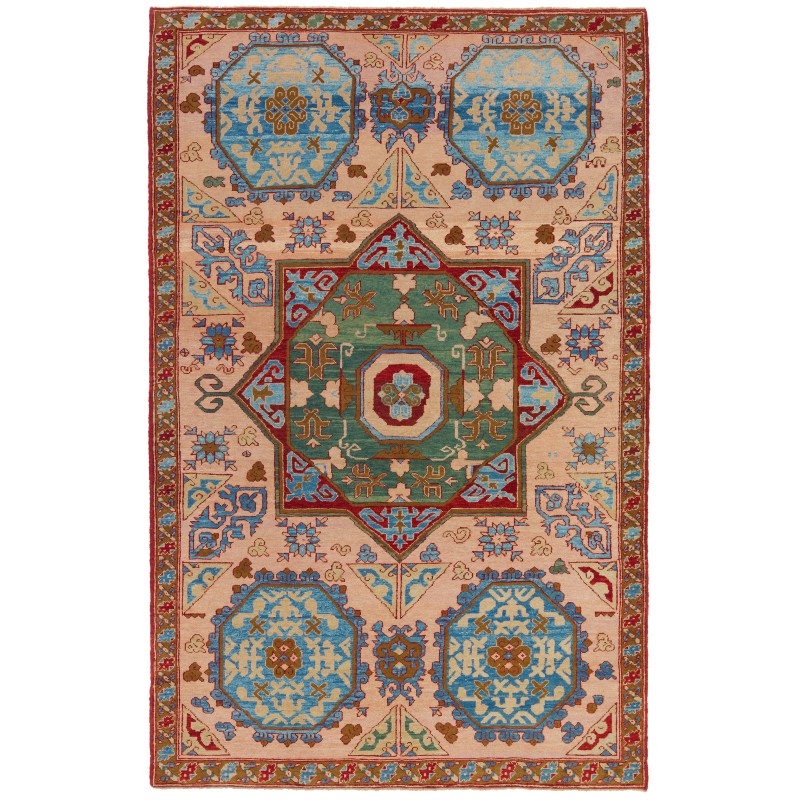
- Stock: In Stock
- Model: C50416
- サイズ: 258cm x 168cm
- SKU: ART416
このカーペットの情報は、E. Heinrich Kirchheimの著書『Orient Star – A Carpet Collection』(Hali Publications Ltd、1993年、No.161)から来ています。この特に優雅で異例な中央のオクタゴンフィギュアは、16世紀の西トルコ地域の8つの尖った星デザインの絨毯によって囲まれています。この絨毯は異例ですが、最初の印象は、16世紀と17世紀の宮廷や工房の絨毯にしばしば見られる2-1-2の構成であるということです。重要な違いは、2-1-2の構成では中央のフィギュアは常にオクタゴンですが、この絨毯のオクタゴンは、さらに8つの尖った星のデザインで囲まれています。専門家の間では、アナトリアの絨毯キリムは、古代の価値やアイデアのシンボルを記録していると信じられており、その伝統は何千年も前にさかのぼり、産業時代に取って代わられるまで続いていました。アナトリアのキリムデザインの伝統は、パイル織りの絨毯がより貴重に見え、何千年も前から高い威信のある価値を持っていたため、幸運な生存を約束されていると考えられています。そのため、キリム織りは長い期間、完全な文化的なコンテキストの中で邪魔されることなく生き残ることができました。この絨毯のデザインは解釈され、私たちのデザイナーは柔らかな色彩を選びます。
The source of carpet comes from the book Orient Star – A Carpet Collection, E. Heinrich Kirchheim, Hali Publications Ltd, 1993 nr.161. This exceptionally elegant and unusual central octagon figure is enclosed by an eight-pointed star-design 16th-century carpet from the West Turkey area. This carpet is unusual because, the first impression is that a 2-1-2 composition, as is often found in court and workshop carpets of the 16th and 17th centuries. A significant difference; In 2-1-2 compositions the central figure is always an octagon, however, this carpet’s octagon, in addition, is enclosed by an eight-pointed star design. Among specialists, Anatolian carpets kilims are believed to record symbols of ancient values and ideas, a tradition that dates back several millennia and was only displaced during the industrial age. The Anatolian kilim design tradition probably owes its lucky survival to the fact that pile-woven carpets look more precious and would already have had a higher prestige value several millennia ago. Kilim weaving was, therefore, able to survive undisturbed within an intact cultural context for a long period of time. The design of this rug is interpreted and our designers choose soft colors for this rug.
全部で6色使っています。主な4色は以下です。
- Mandys Pink 522 (茜)
- Dark Sky Blue 23 (藍)
- Imperial Red 415 (茜)
- Russet 519 (ザクロの皮 - Turkish ヘナ)
上の番号は私たちのカラーコードです。()の中は、主な草木染めの材料です。
